At Park Royal Hospital in Fort Myers, we have a six-bed ECT suite that is equipped with the most current technology and staffed by a specially trained team.
What is Electroconvulsive Therapy (ECT)?
Electroconvulsive therapy (ECT) is an effective form of treatment for clinical depression. ECT is used to treat depression that is resistant to other types of treatment, including medication and psychotherapy.
- ECT is a safe and effective form of treatment for depression.
- ECT is one of the fastest ways to relieve symptoms in severely depressed or suicidal patients.
- ECT is not a last resort; it can be used in any stage of depression.
- ECT does not replace medications or therapy. It is used to enhance the effectiveness of the modalities in patients who are resistant or partially responding to other treatments.
- Some sources have stated that the response rate with ECT is higher compared with the use of medication alone.
- The effects of ECT can last for months and years after the course of treatment.
- Some patients may require maintenance treatment for prevention of recurrent episodes.
Who Is a Candidate for ECT?
ECT may help those who are suffering from acute mental health concerns. It can provide relief from a range of distressing symptoms, such as low self-esteem, sleep disturbances, feelings of hopelessness, and depressed mood.
It is commonly used to treat behavioral health concerns, including:
- Catatonia
- Major depressive disorder
- Bipolar disorder
- Psychosis
- Mania
- Schizophrenia
- Schizoaffective disorder
- Self-harm
ECT can also be utilized to treat individuals who require immediate crisis intervention for life-threatening concerns, such as being at risk for suicide.
At Park Royal Hospital, ECT program eligibility is determined on a case-by-case basis. We work closely with each patient to evaluate their symptoms and decide if ECT services can help them make progress toward healing.
What To Expect During ECT Sessions
Our ECT services are delivered in a dedicated space that is equipped with the most up-to-date technology. Our team is highly trained and ensures the safety and comfort of each patient during the process.
Here is what you can expect during an ECT session:
- You will receive services while reclining on a comfortable bed.
- At the start of the session, you will receive a muscle relaxant and undergo general anesthesia so that you feel no pain during the procedure. Because of this step, you will likely be asked to refrain from eating or drinking for several hours prior to the session.
- Electrodes are placed on the scalp and transmit brief electrical pulses to induce a mild seizure that affects the parts of the brain that regulate sleep, mood, and appetite.
- Shortly after the seizure ends, you will awaken with no memory of what occurred while you were under the effects of the anesthesia.
While a full ECT session takes roughly an hour from arrival to departure, the procedure itself is brief, lasting only a few minutes. You will be closely monitored throughout the entire process and under the supervision of our staff for roughly 30 minutes following the procedure.
Our ECT services are offered on both an inpatient and outpatient basis, and each patient’s total number of recommended ECT sessions depends on their individual needs. Prior to your first ECT session, we will review your schedule with you and answer any questions you may have.
Misconceptions About ECT
It is a misconception that ECT is used as a “quick fix” in place of long-term therapy or hospitalization. It is also incorrect to believe that the patient is painfully “shocked” out of depression. Although ECT has been used since the 1940s, it generally remains misunderstood by the public. Unfavorable news reports and media coverage have contributed to the controversies surrounding the treatment.
How Is ECT Performed?
Prior to ECT, a patient is given a muscle relaxant and is put to sleep with general anesthesia. Electrodes are placed on the patient’s scalp, and a finely controlled electric stimulus is applied. This results in a seizure-like activity within the brain. Because the muscles are relaxed, the visible effects of the seizure are limited to slight movements of the hands and feet. The patient is carefully monitored during the treatment. The patient awakens minutes later, not remembering the treatment.
To view this embedded video, please edit your cookie preferences and allow Performance & Functionality cookies.










